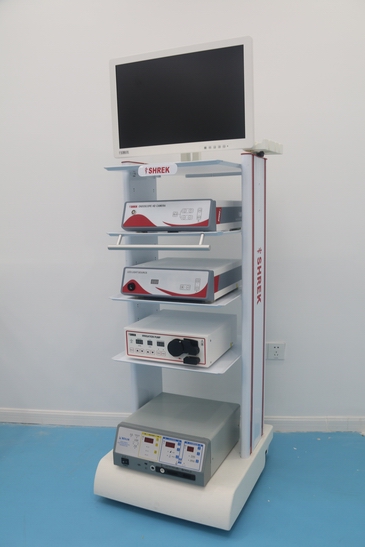The Comprehensive System for Urology Diagnosis and Treatment
The field of urology has greatly evolved in recent years with the introduction of new and advanced technologies. These advancements have greatly improved the diagnosis and treatment of urological conditions, making it easier for physicians to accurately diagnose and treat patients. One of the most important advancements in this field is the development of a complete system for urology diagnosis and treatment.

The comprehensive system for urology diagnosis and treatment includes a range of instruments, equipment, and technologies that are specifically designed for the diagnosis and treatment of urological conditions. This system typically includes a urology tower, HD camera system, LED light source, endoscope, and a range of surgical instruments.
The urology tower is a critical component of the system, as it provides the necessary support for the other instruments and equipment. The tower typically includes a range of outlets and ports that allow for easy connectivity with other equipment. It also provides a stable platform for the camera system and endoscope, allowing for precise and accurate imaging of the urinary tract.
The HD camera system is an essential part of the urology system, as it provides high-quality imaging of the urinary tract. This system typically includes a camera head, coupler, and cables that connect to the tower. The camera head is specifically designed to capture high-quality images of the urinary tract, which can be displayed on a monitor for easy viewing by the physician.
The LED light source is another critical component of the urology system, as it provides bright and consistent illumination of the urinary tract. This is important for accurate diagnosis and treatment of urological conditions. LED technology is preferred in these systems due to its energy efficiency and longer lifespan.
The endoscope is a flexible or rigid tube with a camera at the end that is used to visualize the inside of the urinary tract. It can be inserted into the bladder through the urethra or other access points. The endoscope provides real-time imaging of the urinary tract, allowing physicians to identify any abnormalities or conditions.
Finally, the system includes a range of surgical instruments, such as graspers, scissors, and forceps. These instruments are used to perform procedures such as biopsies, stone removal, and other minimally invasive surgeries.
In conclusion, the comprehensive system for urology diagnosis and treatment is a critical component of modern urology practice. It provides physicians with the necessary tools and equipment to accurately diagnose and treat a range of urological conditions. This system has greatly improved patient outcomes and has helped to revolutionize the field of urology.



Leave a message